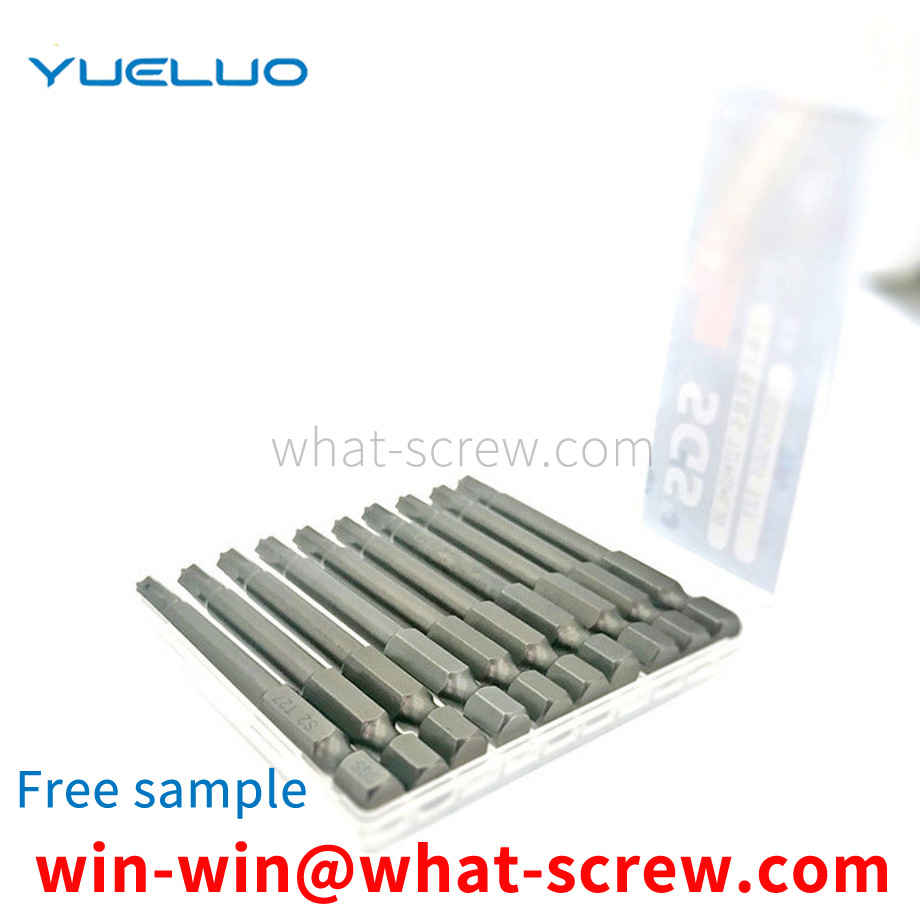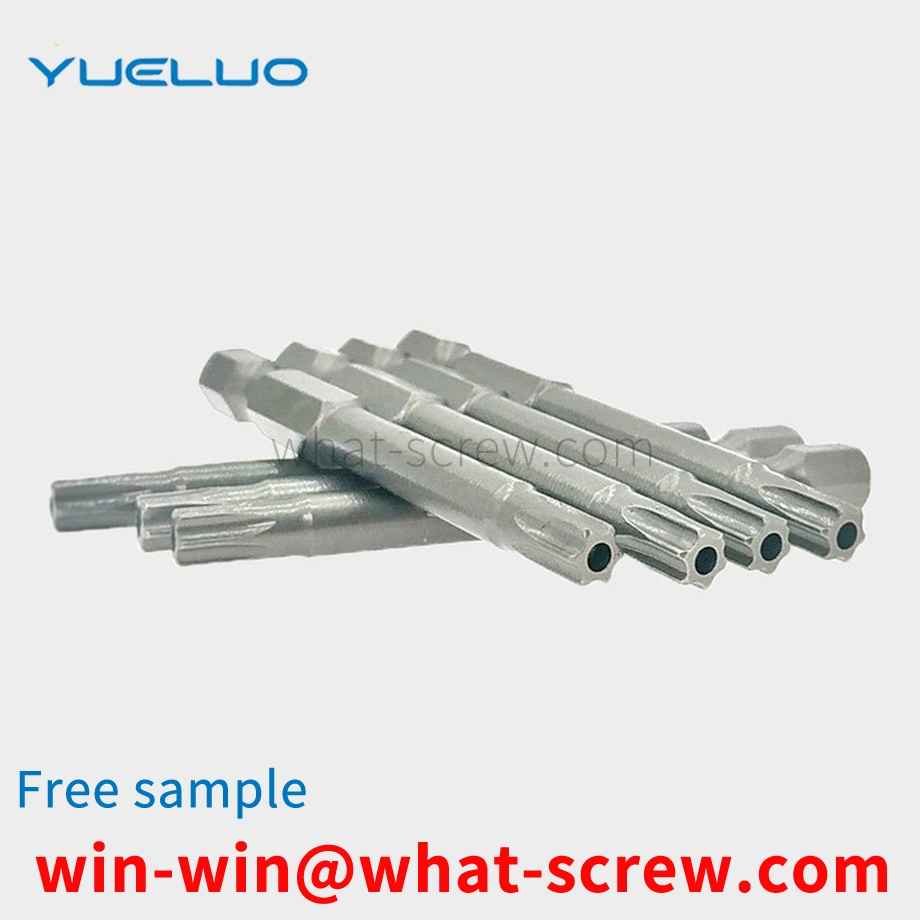Screws are one of the most common fasteners in people's work and life. Because of their simple structure and low manufacturing cost, they are deeply loved by people. In many positions that need to be tightened, people use screws as fasteners; general screws It consists of a screw and a nut. The screw is provided with an external thread. The nut is generally a regular hexagonal body, which is convenient for people to tighten or loosen the screw with a wrench or other tools.
The quality of electroplating is measured primarily by its corrosion resistance, followed by appearance. Corrosion resistance is to imitate the working environment of the product, set it as the test condition, and perform a corrosion test on it. The quality of electroplating products shall be controlled from the following aspects: 1. Appearance: Partial uncoated, scorched, rough, gray, peeling, crusted, and obvious stripes are not allowed on the surface of the product, and pinholes, pitting, and black plating are not allowed. Slag, loose passivation film, cracks, peeling off and serious passivation marks. 2. Coating thickness: The operating life of fasteners in corrosive atmosphere is proportional to its coating thickness. The general recommended thickness of economical electroplating coating is 0.00015in ~ 0.0005in (4 ~ 12um). Hot-dip galvanizing: the standard average thickness is 54 um (43 um for diameter ≤ 3/8), and the minimum thickness is 43 um (37 um for diameter ≤ 3/8). 3. Coating distribution: With different deposition methods, the aggregation method of the coating on the surface of the fastener is also different. During electroplating, the coating metal is not uniformly deposited on the peripheral edge, and a thicker coating is obtained at the corners. In the threaded portion of the fastener, the thickest coating is located on the thread crest, gradually thinning along the flank of the thread, and the thinnest deposit is at the bottom of the thread, while hot dip galvanizing is just the opposite, the thicker coating is deposited on the inside corners and On the bottom of the thread, mechanical plating tends to deposit the same metal as hot-dip plating, but is smoother and has a much more uniform thickness over the entire surface [3]. 4. Hydrogen embrittlement: During the processing and processing of fasteners, especially in the pickling and alkali washing before plating and the subsequent electroplating process, the surface absorbs hydrogen atoms, and the deposited metal coating then traps hydrogen. When the fastener is tightened, the hydrogen is transferred towards the most stressed parts, causing the pressure to build up beyond the strength of the base metal and producing microscopic surface cracks. Hydrogen is particularly active and quickly seeps into the newly formed fissures. This pressure-rupture-penetration cycle continues until the fastener breaks. Usually occurs within a few hours after the first stress application. To eliminate the threat of hydrogen embrittlement, fasteners are heated and baked as soon as possible after plating to allow hydrogen to seep out of the plating, typically at 375-4000F (176-190C) for 3-24 hours. Since mechanical galvanizing is non-electrolyte, this virtually eliminates the threat of hydrogen embrittlement, which exists in galvanizing using electrochemical methods. In addition, due to engineering standards, it is forbidden to hot-dip galvanize fasteners with hardness higher than HRC35 (Imperial Gr8, metric 10.9 and above). Therefore, hydrogen embrittlement rarely occurs in hot-dip plated fasteners. 5. Adhesion: Cut or pry off with a solid tip and considerable pressure. If, in front of the blade tip, the coating peels off in flakes or skins, exposing the base metal, the adhesion shall be considered insufficient.
Surface treatment process of screws 1. Types of surface treatment: Surface treatment is the process of forming a covering layer on the surface of the workpiece by a certain method. The purpose is to give the surface of the product a beautiful and anti-corrosion effect. The following methods are as follows: 1. Electroplating: Immerse the part to be electroplated in an aqueous solution containing the metal compound to be deposited, and pass the current through the plating solution to precipitate and deposit the electroplated metal on the part. Generally, electroplating includes galvanized, copper, nickel, chromium, copper-nickel alloy, etc., and sometimes blackening (blue), phosphating, etc. are also included. 2. Hot-dip galvanizing: It is done by immersing the carbon steel parts in a zinc-melting bath with a temperature of about 510°C. The result is that the iron-zinc alloy on the surface of the steel gradually becomes passive zinc on the outer surface of the product. Hot dip aluminizing is a similar process. 3. Mechanical plating: The surface of the product is impacted by the particles of the plated metal, and the coating is cold welded to the surface of the product.
In some embodiments, the rivet fixing mechanism includes a left moving block, a right moving block, a return spring and a bracket, wherein both the left moving block and the right moving block are movably mounted on the bracket, and the left moving block and the right moving block are connected by a return spring, The insertion mouth can extend between the left moving block and the right moving block, and withstand the left moving block and the right moving block. The left moving block is provided with a left half hole, and the right moving block is provided with a right half hole matching the left half hole. hole. Therefore, when the insertion nozzle is not inserted, the left moving block and the right moving block can be combined together by the return spring, so that the left half hole and the right half hole are combined into one hole to fix and position the rivet, and when the insertion nozzle is inserted When , the left moving block and the right moving block will be pushed up by the insertion mouth to separate the left half hole and the right half hole, so that the rivet is no longer fixed and can be inserted with the movement of the insertion mouth.
Subway tunnels can be divided into rectangular, arched, circular, and elliptical end face forms according to the section shape of the section tunnel. The rectangular end face can be divided into single-span, double-span and multi-span types. There are two types of circles. The subway tunnel needs to install electromechanical equipment through bolts, insert T-shaped bolts into the preset holes on the shield plate of the subway tunnel, and then cast and fix it. The bolts are smooth and the contact surface is small. The bolts installed in the shield plate are easy to fall off, causing the installed equipment to fall and damage or causing losses to pedestrians or vehicles passing in the tunnel. Therefore, it is necessary to further improve the current bolts.
We have many years of experience in the production and sales of screws, nuts, flat washers, etc. The main products are: full-tooth cup head screws, hexagon socket bottom hole 8.75 outer diameter, full-tooth male hexagon bolts, short head socket head screws and other products, we can Provide you with the right fastener solution for you.



















 Service Hotline
Service Hotline




